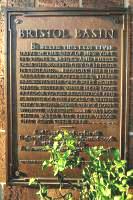 In the almost 6,000 miles of streets, roads and highways in the five boroughs of New York City, only about 15 miles are still paved with cobblestones. As noted by the New York Times: Starting in the 17th century, cobblestones (cobbling refers to the shaping of the stones) began to replace the city’s oyster shell and dirt streets. Round stones were used until the introduction of flat oblong granite, known as Belgian block, which was brought in as ship ballast. … In the mid-to-late 19th century, cobblestones began to be phased out as a primary material, in favor of less expensive concrete.
In the almost 6,000 miles of streets, roads and highways in the five boroughs of New York City, only about 15 miles are still paved with cobblestones. As noted by the New York Times: Starting in the 17th century, cobblestones (cobbling refers to the shaping of the stones) began to replace the city’s oyster shell and dirt streets. Round stones were used until the introduction of flat oblong granite, known as Belgian block, which was brought in as ship ballast. … In the mid-to-late 19th century, cobblestones began to be phased out as a primary material, in favor of less expensive concrete.
One major concrete highway along the Manhattan side of the East River, the FDR Drive, has a foundation built, in part, of ballast bricks of a much newer vintage. The neighborhood between 23rd Street and 34th Street on the FDR is known as Bristol Basin. Michael Pollak in the New York Times writes: During World War II, the Luftwaffe savagely bombed the city of Bristol, England, a major port for American supply ships. After the supplies were unloaded, the American ships had no British goods to replace them on the return trip, and needed ballast for stability. So they loaded up rubble from Bristol’s bombed-out buildings. Back in New York, the ships dumped the ballast from 23rd to 34th Street as landfill for what would become the East River Drive, now Franklin D. Roosevelt Drive.
In 1942 a plaque was placed in Bristol Basin which reads:
“Beneath this East River Drive of the City of New York lie stones, bricks and rubble from the bombed City of Bristol in England … Brought here in ballast from overseas, these fragments that once were homes shall testify while men love freedom to the resolution and fortitude of the people of Britain. They saw their homes struck down without warning. It was not their walls but their valor that kept them free… And broad-based under all is planted England’s oaken-hearted mood, as rich in fortitude as e’er went worldward from the island wall.“
The plaque was rededicated in 1972 by Cary Grant, a native of Bristol whose family endured the blitz.

Very interesting article. My Grandfather was raised in Bristol and survived the Blitz in Cardiff, Wales. Another city that used ballast which can still be seen extensively in the Old Town section is San Juan, PR. The blue granite cobbles are from the Spanish colonial ships which loaded them as ballast in the Canary Islands and off loaded them to backload the colonial spoils to Spain. Most of the plazas, now centuries old, near the Post Office and over to the USCG base were built of this ballast. San Juan, PR is also the site of the first University in the New World.
Good Watch.
Excellent, Rick. And a fine comment Capt.
Rick is it possible for you to set up your fine Old Salt Blog to make is easy for me the SHARE items? I often have to cut and paste as with this article and often you most interesting material goes unpublished to my followers and Friends FB etc.
Fair Winds, following sea.
seriously!!
Pingback: Historic Site Selected for the World Chess Championship Match